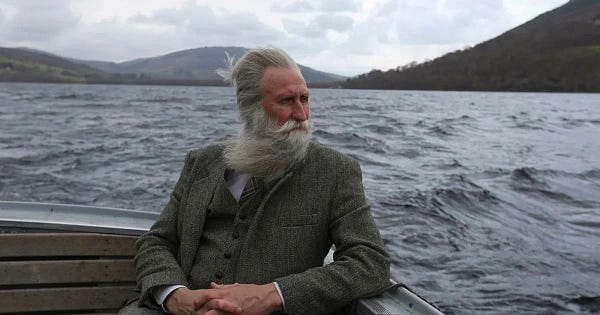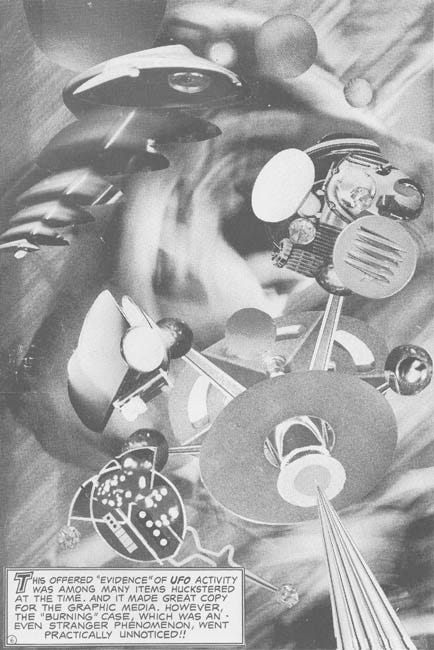Sway through the crowd to an empty space
A mix of putting too much pressure on myself to do something substantial and a terrible time at the office has kept me from sending out a newsletter here lately. Here’s a sort of slapdash gathering of articles, videos, and songs I think are cool/important. As always, I hope this finds you as well it possibly can during these trying times.
Recommend this to a friend if you see something that would strike their fancy.
READS
— The rush to move viewers onto the next bit of content on streaming services has drastically reduced the amount of time people spend watching end credits for movies and TV shows. Composer Daniel Pemberton writes for The Guardian about why the credits are crucial to the viewing experience, both as a part of the art and in recognition of the work that went into it: “It can be a key moment of contemplation, to assess, absorb and reflect on everything you have just experienced. It can be a moment of musical resolve. It can be a place to see the countless hundreds of people who worked to create something from nothing (not just the famous ones). Or it can just be an excuse to look for crew members with funny names. But the current trend with virtually all the streaming services is to treat end credits as having the same artistic merit as a DFS Summer Sofa Sale ad.”

— The new record from Khruangbin dropped a few weeks back. The ubiquitous Houston trio has made a name for itself dicing up strange funk and rock from around the globe, combining sounds from Iran, Columbia, Brazil, Thailand, and everywhere else and stirring them into a simmering, savory jams. Marcus J. Moore traces their history and looks at the recording of their latest LP in this NYT piece.
— We should have listened to Melville (not my cat). At least that’s what author and ecologist Carl Safina writes for the NYT: “Nearly two centuries ago, Melville showed us how easy it is to welcome as our own the touches of others, their equivalent colors, customs and beliefs; their journeys, their transitions. And to remember those who, unwelcomed, suffered.” Aside from being one of the towering works of American literature, Herman Melville’s masterwork, Moby-Dick, is also a great novel of acceptance and historicity. The book follows a man driven mad by something of a hue he hates (WARNING: spoiler for the 1851 novel follow), and Safina finds that significant: “…Moby Dick is neither whale nor demon, but a white prop contrasting with the demonic Captain Ahab, the tormented tormentor, the malignant, abused abuser of authority and of men. Ahab’s bias is personal and color-based. A white whale becomes a blank pincushion for Ahab’s thrusting mania as Melville shades pages with his madness. Yet — and this was absolutely astonishing for its time — Moby Dick becomes the ultimate asserter of reason. In self-defense the whale delivers justice. And never dies.”

— The Art of the Title’s retrospective on Pablo Ferro, the designer responsible for the opening credit sequences of Dr. Strangelove, Midnight Cowboy, A Clockwork Orange, To Live and Die in L.A., Stop Making Sense, Bullitt, The Thomas Crowne Affair and dozens of others, is a great read and just awesome to look at. There’s even a neat montage of his work you can watch on there. Ferro passed away in 2018, but he’s been memorialized with pieces in the NYT and The Atlantic, as well as an animated documentary about his life narrated by Jeff Bridges called Pablo (streaming free for Amazon Prime subscribers).
— Steve Knopper chronicled the making (and exile) of Body Count’s “Cop Killer” — a radical, raw reaction to police violence from a thrash metal band fronted by rapper Ice T in 1992 — for Billboard. The song is not and has never been available on streaming services with the exception of one YouTube video and was the subject of a lengthy national debate in the media around the time of its release. The song remains abrasive and vital as ever.
— Here’s a pretty cool old John Cleese video where the Monty Python troupe member takes on extremism. A welcome voice from the past about an issue still relevant today in the country’s polarized political environment:
— I really dug this Independent piece on the young London no wave movement — a peculiar, hard, mathy musical blend played by bands like black midi, Squid, and (my favorite of the bunch) Black Country, New Road. The bands aren’t all that similar, but they all operate in concert with each other, as is common for no wave stuff, but they’re all reacting to the strange vibes put out by each other’s tunes.
— To round things out, here’s Nile Rodgers talking about how he wrote the riff to David Bowie’s “Let’s Dance” got written:
THE BACK OF THE COMIC BOOK
This is the weirdo section of the newsletter. It won’t be an every time addition, but this is where I’ll try to put some of the stranger links and videos that come across my feed that I think are interesting.
• EXP TV. Like a pirate cable access channel, this 24/7 stream broadcasts an array of culty flotsam and jetsam — LSD trip-induced talking hot dogs, Liberace’s recipe tips, Czech children’s films about UFOs, and cut-together video montages about off the wall subjects like underground 80s culture, Italo disco, cults, pre-revolutionary Iranian pop culture, midnight movies, Soviet sci-fi, reggae rarities, psychedelic animation and local news calamities. A brainchild of the VHS cult gods at Everything Is Terrible and the peculiar, silly YouTube channel Vic Berger. I like to put it on at random and just see what’s on the e-tubes.
• So….there’s a scientific organization the Loch Ness Project and this is their leader:


• I recently ran across this excerpt from a satirical 1947 film out of France made by J.K. Raymond-Millet and based off the work of French science fiction author René Barjavel. It essentially shows how reality will play out once people can carry around handheld TV’s, which naturally look a lot like the smartphones most of us carry around every day now. There’s people walking around watching as they walk and a car crash that looks like a texting and driving accident — it’s eerie. Then there’s really weird things like a TV in a coffee cup and holograms in bed:
• Artist Sanzo Wada created tons of color combinations during his life, many of which have interesting names like Rosolanc Purple, Salvia Blue and Indian Lake. Here’s a visual dictionary of them.
• Jack Kirby — one of the comic book field’s towering giants who created the Fantastic Four, the X-Men, Thor, the Hulk and Iron Man — was a pretty weird dude. I recently purchased one of his oddest collections of work, a single-issue run called Spirit World:

TUNES
For a funky good time at any socially distanced cookout:
For a sophisticated walk in air that isn’t as cool and crisp as you want it to be:
For walking into work when you’re unsure why you have to:
For when you think about the people that aren’t here anymore:
✌️+ ❤️, friends.
